Search
Remove Ads
Advertisement
Summary 
Loading AI-generated summary based on World History Encyclopedia articles ...
Search Results

Article
Ten Juneteenth Myths
The celebration of Juneteenth – originally known as "Freedom Day" – began on 1 January 1866 in Texas and, since then, a number of myths have grown up around the event it commemorates: the issuance of General Order No. 3 in Galveston Texas...
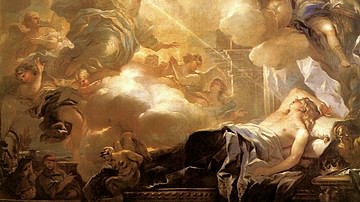
Definition
Solomon
According to biblical tradition (and some say myth), King Solomon was the third and last king in the ancient United Kingdom of Israel. Other faiths, such as Islam and Rastafarianism, also embrace the notion of Solomon as a sagacious king...
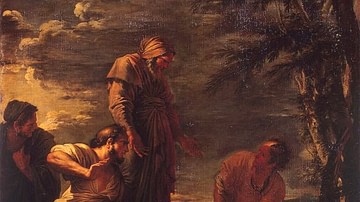
Article
Protagoras of Abdera: Of All Things Man Is The Measure
Protagoras of Abdera (l.c. 485-415 BCE) is most famous for his claim that "Of all things the measure is Man, of the things that are, that they are, and of the things that are not, that they are not" (DK 80B1) usually rendered simply as "Man...

Definition
New Testament
New Testament is the name for the second half of the Christian Bible, compiled from the 2nd century CE, after the separation of Christianity from Judaism. The Christian Bible retained books of the Jewish scriptures, the Old Testament, as...

Definition
Old Testament
Old Testament is the Christian name for the books of the Jewish scriptures that constitute the first half of the Christian Bible. "Old" in this sense was a means to distinguish Judaism from Christianity at the creation of the New Testament...

Definition
Mythology
Myths are a part of every culture in the world and are used to explain natural phenomena, where a people came from and how their civilization developed, and why things happen as they do. At their most basic level, myths comfort by giving...
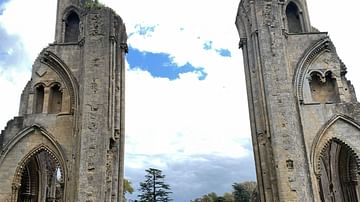
Article
Visiting Glastonbury - the Town of Myths & Legends
The Somerset Levels is an area of the British Isles that captivates visitors with its stunning natural landscape and historical sites and monuments. Glastonbury is famous for its apple orchards and music festival. It is one of the most visited...
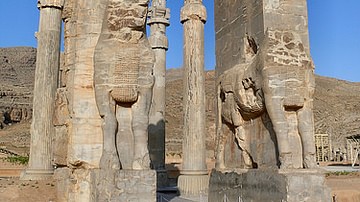
Image
All Nations Gate at Persepolis
Western view of the "All Nations Gate" at Persepolis, located in present-day Iran. This gate was not on Darius the Great's initial plan for Persepolis but was added by his son and successor, Xerxes. The initial main entrance of the palace...

Image
Gate of All Nations, Persepolis
The east side of the Gate of All Nations (also known as the Gate of Xerxes) in Persepolis (Iran), built by Xerxes I (r. 486-465 BCE). The gate was flanked by two monumental statues of lamassu, winged bulls with human heads, who were thought...
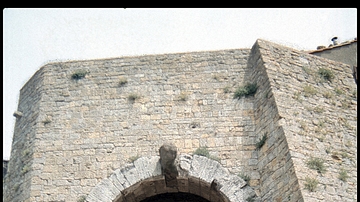
Image
Porta all' Arco, Volterra
The Porta all' Arco at Volterra, Tuscany. Part of the 4th-3rd century BCE Etruscan fortification walls of the city.